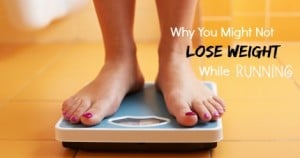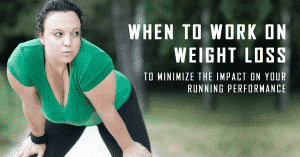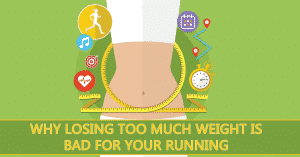You are putting in the miles, you are making the effort with your diet and you still aren’t losing weight? Are you getting stuck in the following hidden “healthy habit” calorie traps?
Hidden Trap #1: Low-Fat Foods
In 1984, Time Magazine featured an article called, “Sorry, It’s True. Cholesterol Really Is A Killer.” The article claimed that the more you lower cholesterol and fat consumption in your diet, the more you reduce your risk of heart disease, which kicked off the low-fat food craze that has persisted for two decades. Unfortunately, that article couldn’t have been more detrimental to the health and performance of runners everywhere.
Four problems with low-fat foods and running
Problem #1: Low fat foods have lots of added sugar
Whole-fat foods go through significant processing to become low-fat foods. Often, after the fat has been removed, sugar is added to help improve the taste of the food. This added sugar increases the amount of simple carbohydrates in the low-fat food, raises the calorie content, and actually makes the food unhealthier overall.
Most important to runners, research shows that simple carbohydrate consumption leads to quick blood sugar spikes, which is bad for runners trying to lose weight. Here’s why:
When your blood sugar spikes, your body responds by releasing insulin. Insulin is a hormone that helps your body regulate blood sugar. When insulin is released into the blood stream, blood sugar levels drop back down to normal levels, which in turn can make you feel hungry again.
You may find yourself grabbing another handful of the low-fat crackers or another low-fat yogurt an hour after your last snack or meal. Or, if that low-fat snack was a pre-run snack, you will notice that a couple miles into your run, your energy plummets, and you have to rely on an energy gel or chews to keep going.
Problem #2: Low-fat foods are not as filling, so you eat more
Not only do we tend to eat more low-fat foods because of the blood sugar roller coaster they send our bodies on, but without fat, food is not as filling because fat takes longer to digest and helps us feel full.
You are actually better off eating whole-fat foods in smaller quantities than low-fat foods in larger quantities because a whole-fat snack before a run is going to stick with you longer than a low-fat snack. The slower digestion will allow your body to breakdown and use energy from that food at a slower, steadier pace. Whole-fat foods will keep your blood sugar level and delay or prevent an energy crash during your run, depending on the distance you are running.
Problem #3: We tend to think low fat foods are healthy
Psychologically, the “low-fat” label on packages of food often translates to; “this must be healthy for me, so I can eat more.” As you can imagine, this doesn’t bode well for a runner trying to lose weight.
Dr. Brian Wansink, director of the Cornell Food & Brand Lab. and Dr. Pierre Chandon, assistant professor of Marketing at INSEAD, developed and tested a framework that contends that “low-fat” labeling increases food intake in two common ways: first, by increasing people’s perception of the appropriate serving size of a food; and second, by decreasing guilt of over consumption. When we perceive something as healthy, portion sizes seem to go out the window.
Problem #4: Dietary cholesterol and healthy fats do not lead to an increase in heart disease
Research has now proven that dietary cholesterol and healthy fats do not lead to an increase in heart disease in runners, but actually prove to have cholesterol lowering effects.
A study published in 1997, in the Journal of Medicine and Science in Sports and Exercise, found that runners who increased their daily fat calories to 30-42% from 16%, “did not change adiposity, weight, heart rate, blood pressure, serum triglycerides, total cholesterol, and LDL cholesterol, but increased HDL cholesterol.” Runners who maintained only 16% calories from fat had lower HDL cholesterol, which actually increases their risk for heart disease.
What you should do instead
Try whole-fat foods instead of low-fat foods. One serving of a whole-fat food will taste better, be more satisfying, keep you full longer and actually save you calories.
For example, eating only one whole-fat yogurt instead of one low-fat yogurt with a handful of low-fat pretzels or chips saves you 50-150 calories.
Nab Our FREE 4-part Weight Loss Email Course
You’ll learn the science behind losing weight and still running well so you can understand the “why” of weight loss for long-term success.
Lessons include why simply running more and eating less won’t help you lose weight, why your weight fluctuates each day, and the best way to distribute calories throughout your day. Plus more…
Hidden Trap #2: Grazing
It wasn’t too long ago that grazing or eating small meals throughout the day was the “healthy diet” claim. The idea seemed to make sense – eating often would head off hunger and should result in not eating as much at meal times.
However, a 2010 study in the journal Obesity found that people who eat low-calorie diets feel more satisfied and less hungry when they eat three times a day, compared to eating six times a day.
This study clearly suggests that mini meals aren’t beneficial for appetite control. People tend to eat more than they realize while grazing and they pick foods like crackers and cookies instead of vegetables or lean proteins. Grazing also stimulates saliva secretions, which triggers our digestive enzymes to stimulate our gut and our appetite. This processes confuses our bodies natural sense of hunger, causing us to eat more.
As runners, we often excuse grazing because of our activity level. “I ran 5 miles this morning and nuts are good for you, so I can have another handful.” Nuts are good for you, but that extra handful or two of nuts, depending on the size of your hand, could be as much as an extra 250-400 calories.
Running keeps us fit and healthy, but if you’re looking to lose weight or need to shed a few pounds to get down to your ideal racing weight it doesn’t give you the ability to eat absolutely anything you want, whenever you want it. How many times a day do you think, “it’s fine, I ran today”?
What you should do instead
Divide your daily calories into three meals and one or two snacks, depending on your training schedule. Try going at least three hours and up to four or five without eating. It is okay to experience hunger, or your stomach growling. The goal is to eat when you’re hungry but not starving, which reduces the risk of overeating.
It will take a few weeks to find the timing that works best for you and your running schedule. Here are two example days to get you started:
Example 1
8:00 a.m. Breakfast
12:00 p.m. Lunch
3:00 p.m. Snack
5:00 p.m. Run
7:00 p.m. Dinner
Example 2
5:00 a.m. Run
7:00 a.m. Breakfast
10:00 a.m. Snack
1:30 p.m. Lunch
5:30 p.m. Dinner
“Healthy” calorie traps can be extremely sneaky and frustrating, and can affect your training and weight loss success. Make the two changes in this article to your diet and routine, and watch as your weight steadily decreases and your overall performance increases.
Do you have questions about how to implement these tips into your training or nutrition plan? Leave us a comment and we would love to help you out.





7 Responses
Good article! Thanks! Is there a reason why we (mostly) feel hungrier in the winter than in the summer? Do we burn more calories when we exercise in the cold?
Great question Pat! We don’t actually burn more calories when we exercise in the cold.
Our bodies burn the same amount of calories to stay warm in the winter as it does to stay cool in the summer. Often we find ourselves hungrier durning cold weather or after colder workouts because eating and digesting foods is one way our bodies can create heat. That is also why cravings for “comfort foods” increase in the winter. Comfort foods are typically high in fat and dense meals. Meals that require more digestion, and increasing core temperature.
This is a great article! I have been trying to lose twenty pounds and have been running 2-4 miles four days a week on elpticals (I am too clutzy on treadmills) and I watch my calorie intake etc. these tips, will they help me lose the weight ?
Thanks, Holly. These tips will definitely help correct some of the flaws in your diet. We’ve also published a few other articles that may help you out:
Weight loss and running
Why you might not lose weight
Energy Bars for runners
Good luck with your weight loss goals!
Worth reading! how can i know or measure my calorie intakes?
Glad you enjoyed, Marlon. We recommend using MyFitnessPal. It allows you to track all the calories in the foods you eat – very helpful if you’re trying to lose weight. Hope that helps!
Hi. Was wondering if you could recommend any snacks that I could eat that not only benefit me as a runner but also help me lose weight? I really struggle w/eating the wrong kind of snacks.